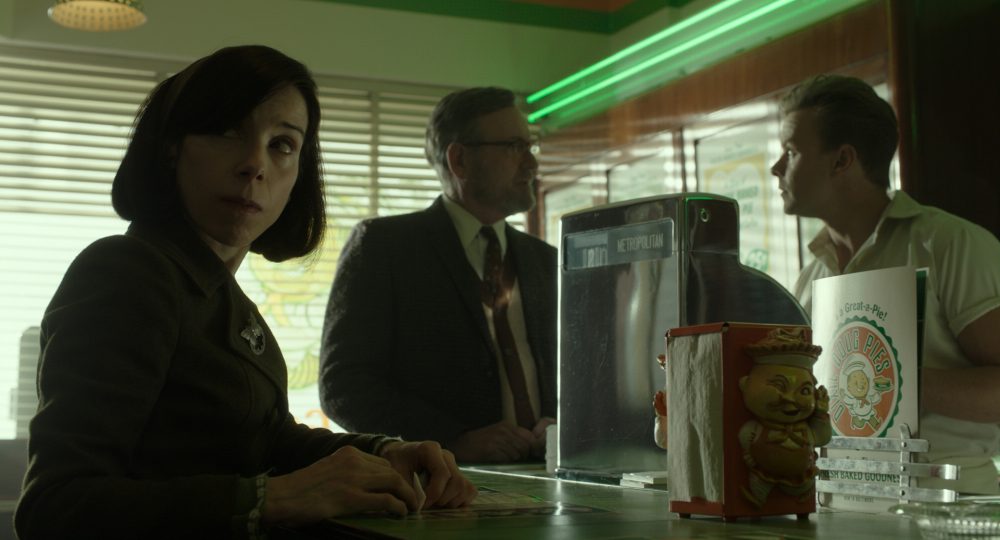Archive for the ‘dixie doug pie shop’ tag
On “The Shape of Water”

After watching The Shape of Water, one particular scene kept resonating. It was a minor scene, not even necessary for the plot, but a timely scene. The scene occurs in the Dixie Doug Pie shop (not the scene pictured above, but a later scene).
Giles played by Richard Jenkins sits next to the proprietor of the shop at the counter, enjoying a slice of pie when a black couple walk in seeking to be served. The store owner tells them – “take out only” and the couple protest that the pie shop is empty – why can’t they sit and the owner responds that they must leave. Just before the couple walks in, Giles reacts to the store owner telling him that he is good at his role of chatting with customers by holding the owners hands. The store owner jumps off his stool and basically refers to Giles as a dirty old man. After telling the black couple to leave, the store owner (originally from Ottawa, Canada with a fake southern accent) tells Giles that he should do the same and leave. Giles takes his napkin to his tongue, trying to clean the pie out of his mouth (has Eliza had done earlier with the green pie), tosses the napkin on his plate and exits the pie shop.
Part of the beauty of The Shape of Water is in the nuances; the attention to details that later resonate with the viewer. If one considers many of these details, the film is an anti-capitalist gesture. Early into the film the pie guy explains that his store is part of a franchise and that franchising is the future. Many other elements in the movie represent the future or a changing society in which there is no place for intimacy and oddity. Instead the future is mass produced, sleak, fake and hostile. And tied to the future is commodification and materialism.
We see this alienating future throughout the film. Giles an illustrator, hand paints magazine advertisements. Eventually he finds himself without a job due to the adoption of photography in advertisement. The hand-made has been replaced by the mechanized image that is fast and precise.
Regarding Giles’s Rockwell-like depiction of an ecstatic nuclear family enjoying jello – there is the detail of the color green. Giles originally paints the jello red, but he is told that it must be green. The color green becomes a reoccurring element in the film. The slice of pie that Eliza finds disgusting and must remove from her tongue using a napkin is bright green. To Strickland, the antagonist, the sleek new Cadillac is green. Whether it is the jello, the pie or the car, green is used as the color of artificial products – products that represent the future. Simple associations to the color green are of course envy, greed and money – all elements of capitalism in its purest form that is to generate capital for the sake of greater capital, regardless of any human toll.
As with the green pie which is disgusting to Eliza, the beautiful green Cadillac is scarred by the hand-painted van filled with misfits. In the end, Strickland, the man of the future is defeated and the promise of the future falls short to the monster, the mute and the homosexual.